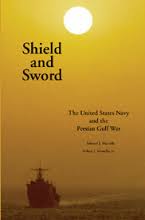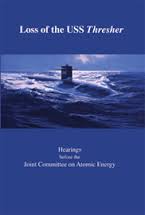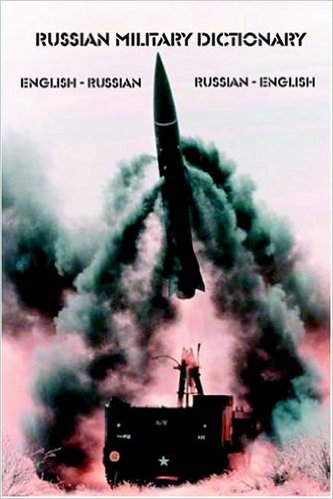1 Volumes
Ross and Perry, Inc. Publishers
A topic devoted to the best selling books from Ross and Perry Publishing.
Revolt of the Admirals: The Fight for Naval Aviation, 1945-1950
The National Security Act of 1947, intended to unify the separate armed forces services under a single Defense Secretary, failed to settle the deeper issue that divided them: the debate over roles and missions. One symptom of this conflict was a showdown between the Air Force and the Navy over the role of carrier aviation in the national security framework of the United States. From the early days of aviation, Army and Navy aviators had approached their roles very differently. Army air doctrine centered on strategic bombing, while Navy doctrine focused on carrier air power as an increasingly important element of the fleet's offensive striking power. In the postwar era of demobilization, these differences were exacerbated as each service fought for its share of a decreasing defense budget. Louis A. Johnson's appointment as Secretary of Defense in late March 1949 added to the Air Force-Navy friction. While Johnson allowed procurement of B-36s for the Air Force strategic bombing program to be greatly accelerated, he canceled development of the first flush-deck supercarrier, which would have enabled the Navy to operate long-range attack aircraft capable of carrying atomic weapons. This rejection fueled the Navy's fear that naval aviation was to have a diminishing role in the new atomic age and provided the final impetus for a clash between the Air Force and the Navy. The conflict came to a head when an anonymous document was delivered to members of Congress in May 1949, alleging improprieties in the Air Force procurement of the B-36 bomber. Although later found the be baseless, these charges inspired two sets of congressional hearings: the first on the B-36 bomber program itself, and the second on the issue on unification a strategy. During the latter hearings, high-ranking naval officers voiced their opinion that naval aviation was being denigrated by a Defense Secretary enamored with possibilities of strategic bombing and scornful of the Navy's contribution to such a mission. The press soon termed their vehement testimony in support of naval aviation the "revolt of the admirals."
About the Author
Jeffery G. Barlow has worked as a historian with the Contemporary History Branch of the Naval Historical center since 1987. He is writing an official two-volume history on the U.S. Navy and national security affairs. During 1969-1970, while on active duty with the U.S. Army, he served as a staff member of the newly established U.S. Army Military History Research Collection at Carlisle Barracks, Pennsylvania. A Navy junior, Dr, Barlow graduated with a B.A. in history from Westminster College (Pa.) in 1972. At the University of South Carolina, where he was an H.B. Earhart Fellow, he studied under Dr. Richard L. Walker and received a doctorate degree in international studies in 1981. Dr. Barlow's contributions to published works include a biographical chapter on Admiral Richard L. Conolly in Stephen Howarth's Men of War: Great Naval Leaders of World War Two (New York: St. Martin's Press, 1993) and chapters on Allied and Axis naval strategies during the Second World War in Colin S. Gray and Roger W. Barnett's Seapower and Strategy (Annapolis: Naval Institute Press, 1989). His work has also appeared in International Security and Air University Review.
Purchase a copy here
Tactics: U.S. Marine Corps FMFM 1-3
Front Cover
Purchase your own copy here.
Shield and Sword: The United States Navy and the Persian Gulf War
By Edward J. Marolda

|
| Shield and Sword |
Since the UN coalition victory in Operation Desert Storm in 1991, journalists, generals, and historians have focused on the air blitz against Iraq and General Norman Schwarzkopf's Hail Mary maneuver around the desert flank of the Iraqi army, while the U.S. Navy has received relatively little attention. This book highlights the Navy vital contribution to winning the Gulf War. The work also emphasizes that the U.S. Navy presence and actions in the Persian Gulf in the years before the war helped the Bush administration persuade the Arab nations of the region and American traditional allies to join the international effort against Iraq. Similarly, the navy has been an essential instrument of U.S. foreign policy since the end of Desert Storm. As we can go to press in fall 1998, U.S. naval forces stand ready once again to carry out their political-military mission of compelling Iraqi compliance with UN resolutions against the development of weapons of mass destruction. The work stresses the Navy involvement in joint and multinational operations. Ironically, the U.S. Navy worked long and hard during the Cold War preparing for armageddon at sea against the Soviet navy, a confrontation that navy envisioned fighting virtually alone. Actual operations were quite different. In the wars in Korea and Vietnam and the hostilities in Lebanon, Grenada, the Persian Gulf (1987-1988), and Panama, the navy routinely operated with U.S. ground and air forces and those of its global allies. Since this was also true of the Gulf War. We have elaborated on the Navy interaction with the other U.S. armed services and with the navies of America coalition partners.
Sierra Hotel
Military Dictionary

|
| Front Cover |
This publication sets forth standard military and associated terminology to govern the joint and DOD-wide activities of the Department of Defense and, in particular, the performance of the Armed Forces of the United States in joint operations.
To order a this book from the publisher, click here .
Northrop YF-23A Flight Manual
This manual contains the necessary information for the safe and efficient operation of the YF-23A flight test prototype aircraft. These instructions provide a general Knowledge of the aircraft and specific normal and emergency operating procedures. Your experience is recognized; therefore, basic flight principles and detailed description and operation of systems common to all other aircraft are avoided. This manual provides the best possible operating instructions under most circumstances but is not a substitute for sound judgment. Multiple emergencies, adverse weather, terrain, etc., may require modification of the procedures. This publication is intended for use by an experienced and qualified pilot assigned to the YF-23A Flight Test Program. Flight and operating limitations included herein can be supplemented and/or superseded by Supplemental Flight and Operating Limitations, published under separate cover by Northrop System Safety (Orgn. 3891/89.) The Manual is divided into seven fairly independent sections to simplify reading straight through or using as a reference manual.
To purchase this book from the publisher, click here .
Cedar Falls Junction City

|
| Front Cover |
Operations CEDAR FALLS and JUNCTION CITY took place during the first five months of 1967 and were the first multidivisional operations in Vietnam to be conducted according to a preconceived plan. They were to result in a turning point in the war: they confirmed that such operations do have a place in counterinsurgency warfare today; they brought an end to the enemy's thinking that his third phase of the war - large scale operations throughout the country - would be successful; they caused the enemy to re-evaluate his tactics and revert to smaller-scale guerrilla operations; they destroyed his camps, pillaged his supplies, and killed hundreds of his best troops; they proved to the enemy that his old sanctuaries were no longer inviolable, thus causing him to depend primarily upon those located over the border in Cambodia; they helped convince the enemy that the maintenance of large bases and main force units near urban areas was risky business; and they enhanced immeasurably the confidence of the allied forces in South Vietnam, a confidence which had been growing since the dark days of the first half of 1965. Thus CEDAR FALLS and JUNCTION CITY were to become the most important operations of the war to that time, and perhaps since. For the military history buff, Operation CEDAR FALLS will not be nearly so interesting as JUNCTION CITY because it consisted primarily of small unit contacts and the onerous tasks of finding and destroying base camps, storage facilities, and tunnels and of clearing jungles. CEDAR FALLS was unique, however, in that one of its missions was to evacuate some 6,000 inhabitants of the Iron Triangle area and destroy their villages. JUNCTION CITY, on the other hand, was more varied in view of its scope and the fact that there were five battled interspersed among the air assaults and the numerous search and destroy activities.
To purchase a copy from the publisher, click here .
Loss of USS Thresher

|
| Front Cover |
Although there has been much speculation as to the cause of the Thresher loss, the committee must conclude from its own study of the facts developed that the specific cause is not known. It was important, therefore, that all aspects of the Thresher's design, construction, and operation be reviewed to uncover whatever weaknesses may have existed at the time, whether or not they were the proximate cause of the accident. Investigations revealed that in parts of the ship, practices, conditions, and standards existing at the time were short of those required to ensure safe operation of the Thresher. Basically, the ship was built to two standards. the standards of design and construction for the nuclear powerplant were more stringent than the rest of the ship. Of particular note is that the technical specification requirements were not greatly different, but that adherence to them was far more strict for the nuclear powerplant than for the rest of the ship. It is also obvious that while nuclear power was revolutionizing the submarine as a weapons system during the past ten years, the more conventional aspects of the submarine and its safety devices were not keeping pace with the more stringent performance requirements of greater endurance, higher speed, and deeper submergence. For example, the design and limited blowing capability of the deballasting system which might have been adequate for the World War II, and postwar conventional submarines were inadequate as an emergency system for the larger, deeper diving, higher performance nuclear submarines. Similarly, the use of the less costly method of joining metal piping systems by brazing is questionable for hazardous saltwater lines subject to the tremendous pressures of deep depth as compared to welding which is a more expensive and time-consuming method. Corrective action is now being taken by the Department of the Navy in both of these areas.
Russian Military Dictionary

|
| Front Cover |
The purpose of this dictionary is to provide Russian equivalents for American military terms and the American equivalents of Russian terms. As far as possible, true equivalents based on current practice and usage have been given, rather than literal translations. The scope of the dictionary has been quite closely limited to military subject matter and terminology from directly related fields. Terms have been selected for inclusion mainly according to their relative importance for military purposes and the availability of authentic Russian scores of information. In the arrangement of terms, the single-entry method has been used. A straight alphabetical sequence is followed, regardless of whether any given entry consists of more one word or more. Among various equivalents for a given term, synonyms are separated by commas and different meanings by semicolons.
French-English Military Technical Dictionary

|
| Boyd Theatre |
To purchase a copy from publisher, click here .
| Posted by: Kalie | Apr 22, 2011 6:14 PM |
10 Blogs
Revolt of the Admirals: The Fight for Naval Aviation, 1945-1950
The National Security Act of 1947, intended to unify the separate armed forces services under a single Defense Secretary, failed to settle the deeper issue that divided them: the debate over roles and missions.
Tactics: U.S. Marine Corps FMFM 1-3
Tactics of the U.S. Marine Corps FMFM 1-3.
Shield and Sword: The United States Navy and the Persian Gulf War
 Since the UN coalition victory in Operation Desert Storm in 1991, journalists, generals, and historians have focused on the air blitz against Iraq and General Norman Schwarzkopf Hail Mary maneuver around the desert flank of the Iraqi army, while the U.S. Navy has received relatively little attention.
Since the UN coalition victory in Operation Desert Storm in 1991, journalists, generals, and historians have focused on the air blitz against Iraq and General Norman Schwarzkopf Hail Mary maneuver around the desert flank of the Iraqi army, while the U.S. Navy has received relatively little attention.
Sierra Hotel
 On November 2, 1969, an F4D from the 555th Tactical Fighter Squadron (TFS) ripped along at high speed and low altitude above a dirt road through northern Laos.
On November 2, 1969, an F4D from the 555th Tactical Fighter Squadron (TFS) ripped along at high speed and low altitude above a dirt road through northern Laos.
Military Dictionary
 Department of Defense Dictionary of Military and Associated Term
Department of Defense Dictionary of Military and Associated Term
Northrop YF-23A Flight Manual
A manual containing the necessary information for the safe and efficient operation of the YF-23A flight test prototype aircraft.
Cedar Falls Junction City
 Operations CEDAR FALLS and JUNCTION CITY took place during the first five months of 1967 and were the first multidivisional operations in Vietnam to be conducted according to a preconceived plan.
Operations CEDAR FALLS and JUNCTION CITY took place during the first five months of 1967 and were the first multidivisional operations in Vietnam to be conducted according to a preconceived plan.
Loss of USS Thresher
 Hearings before the Join Committee on Atomic Energy
Hearings before the Join Committee on Atomic Energy
Russian Military Dictionary
 The purpose of this dictionary is to provide Russian equivalents for American military terms and the American equivalents of Russian terms.
The purpose of this dictionary is to provide Russian equivalents for American military terms and the American equivalents of Russian terms.
French-English Military Technical Dictionary
 A dictionary of French to English military terms.
A dictionary of French to English military terms.